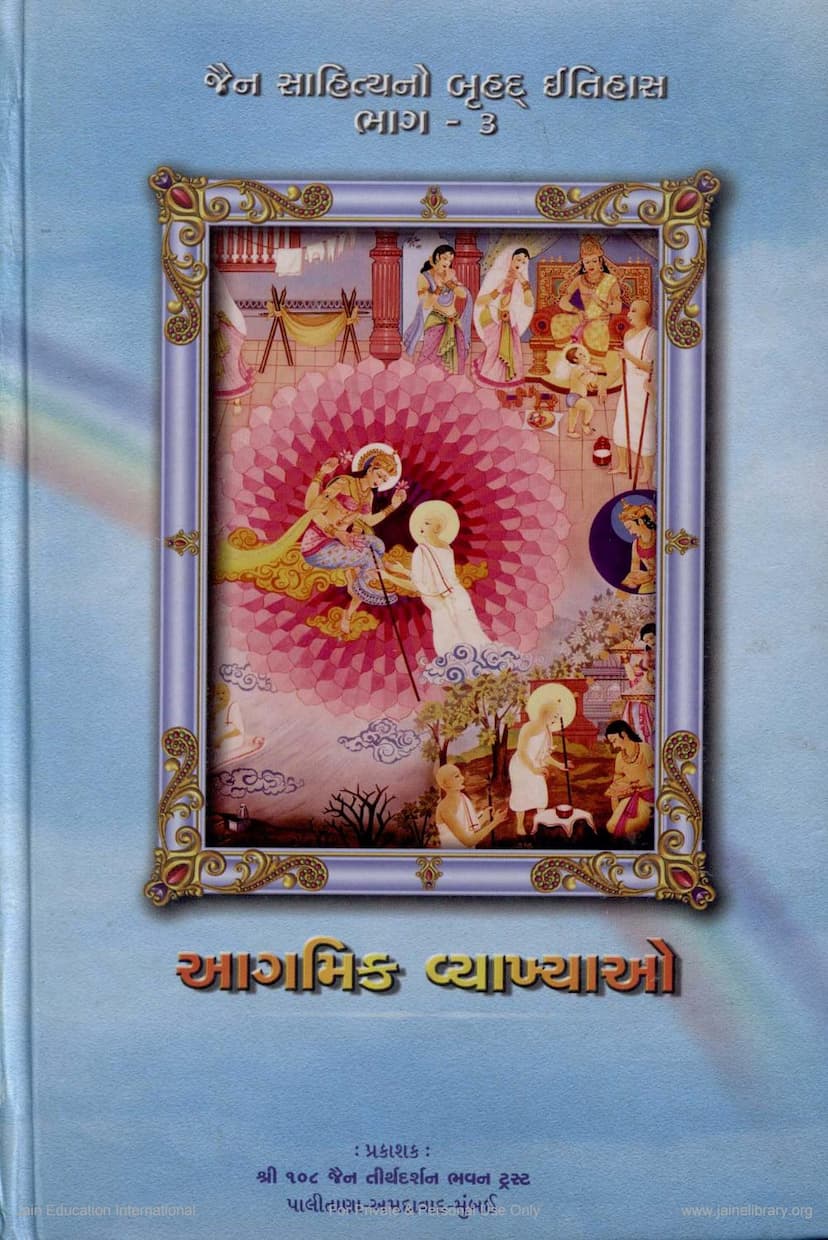Agamik Vyakhyao Jain History Series 3
Added to library: September 1, 2025

Summary
This Jain text, titled "Agamik Vyakhyao Jain History Series 3" authored by Dr. Mohanlal Mehta and published by Shri 108 Jain Tirthdarshan Bhavan Trust, Palitana-Ahmedabad-Mumbai, is the third volume in a Jain History Series.
This particular volume, "Agamik Vyakhyao" (Agamic Commentaries/Interpretations), provides a comprehensive overview of the vyakhya sahitya (commentarial literature) on Jain Agams. The author highlights that while the first two volumes introduced the Agams themselves, this volume delves into the extensive commentaries written on them.
The necessity for such commentaries arose due to the passage of time and the increasing difficulty in understanding the original Agamic texts. Jain Acharyas, therefore, undertook the creation of these commentaries (tika) to explain the original scriptures.
The book categorizes these Agamic commentaries into five main classes:
- Niryuktis (Nirvuktis): These are verse-based Prakrit commentaries that primarily focus on defining technical and philosophical terms found in the Agams.
- Bhashyas: Similar to Niryuktis, these are also verse-based Prakrit commentaries.
- Churnis: These are Prakrit or Sanskrit-mixed Prakrit commentaries.
- Sanskrit Commentaries (Tikas): These are commentaries written in Sanskrit.
- Commentaries in Regional Languages (Balavbodhas): These are explanatory texts written in regional languages like Gujarati, Rajasthani, and Hindi.
The volume provides detailed introductions to prominent scholars and their works within each category. This includes:
- Niryuktis: Focusing on Acharya Bhadrabahu Swami, the renowned Niryuktikar, and his works on various Agams like the Aavashyak Niryukti, Dashavaikalik Niryukti, etc. It also differentiates between the Niryuktikara Bhadrabahu and the Chedasutra-kara Bhadrabahu, placing the former in the 5th-6th century CE.
- Bhashyas: Highlighting the contributions of key Bhashyakaras such as Jinabhadra Gani Kshamashraman and Sanghadas Gani, and their significant works like the Visheshavashyak Bhashya and Jitakalpa Bhashya.
- Churnis: Emphasizing the role of Jinadas Gani Mahattar as a prominent Churnikar, and discussing his works on texts like Nandi Churni, Anuyogdwar Churni, etc. It also mentions other Churnikaras like Agastyasimha and Siddhasen Suri.
- Commentaries (Tikas): Introducing major Sanskrit commentators like Haribhadra Suri, Shilanka Suri, Abhayadeva Suri, Malayagiri, and Maldhari Hemachandra Suri, and discussing their critical contributions to the understanding of the Agams.
- Commentaries in Regional Languages: Briefly touching upon the Balavabodhas composed in languages like Gujarati.
The book also explores the various subjects covered by these commentaries, demonstrating their immense value in understanding Jain philosophy, ethics, sociology, cosmology, history, and culture. The summaries of key commentaries like the Aavashyak Niryukti, Visheshavashyak Bhashya, Dasha Shruta Skandha Niryukti, Brihatkalpa Niryukti, and Vyavahar Bhashya provide significant insights into the depth and breadth of Jain scholastic tradition.
In essence, this volume serves as a foundational text for anyone interested in the scholarly and interpretive tradition within Jainism, showcasing the intellectual lineage and the profound effort made by Jain Acharyas to preserve and elucidate the Agamic knowledge.